Your plate can be more powerful than your pill bottle. For millions battling joint pain, this is a new clinical reality. The choice between constant pain and the risks of long-term pills is frustrating.
But you can fight the source of the fire, chronic inflammation, not just the smoke. This is not about a single miracle food. As one dietitian, Nancy Oliveira, explains, “it’s more about your overall dietary pattern.”
This article gives you the 13 all-star joint-healing foods that form the foundation of this healing plan, approved by doctors.
How Food Fights Pain: The Truth About Diet and Inflammation
The Inflammation-Diet Connection
The Fire “Fuels”
Foods that can promote or worsen chronic inflammation:
- Refined Carbs (white bread, pastries)
- Sugary Drinks & Snacks
- Processed Meats (hot dogs, sausage)
- Trans Fats (in some margarines)
- Excessive Omega-6 Fats (corn/soy oil)
The “Firefighters”
Foods that help combat and reduce chronic inflammation:
- Fatty Fish (salmon, mackerel)
- Leafy Greens (spinach, kale)
- Berries (blueberries, strawberries)
- Nuts & Seeds (walnuts, flaxseed)
- Olive Oil & Avocados
The “Leaky Gut” Link
An unhealthy gut can “leak” inflammatory particles that travel to other parts of the body, like joints.
To get the solution, you first need to get the enemy: chronic inflammation. It’s important to tell the difference between two types. Acute inflammation is a good thing. It’s your body’s short-term defense against injury, like the swelling that protects a sprained ankle.
Chronic inflammation is different. It’s a defense system gone wrong. It’s like a low-level fire that never turns off. In conditions like rheumatoid arthritis, the immune system mistakenly attacks healthy joints.
And new research confirms this fire is also a key part of the pain and cartilage breakdown in osteoarthritis.
A big focus for doctors now is the gut-joint axis. This is the link between your gut and your joints. An unhealthy gut can lead to “leaky gut.” This lets inflammatory bits escape your digestive tract and travel to your joints, starting that fire.
This is where food becomes medicine. The expert-approved solution is a dietary pattern. You have to remove the “fuel” for the fire (inflammatory foods) and add the “fire extinguishers” (anti-inflammatory foods).
The most studied and recommended pattern by doctors is the Mediterranean Diet. The foods below are the core parts of this powerful, healing pattern.
1. Fatty Fish (Salmon, Mackerel, Sardines)

Fatty fish are the best source of omega-3 fatty acids, specifically EPA and DHA. These nutrients are known as powerful anti-inflammatory agents. They play a key role in reducing inflammation throughout the body.
The benefits for rheumatoid arthritis (RA) are supported by strong evidence. A major review analyzing 14 trials found significant improvements. Omega-3s clearly improved joint tenderness and function for RA patients.
Further research confirms the anti-inflammatory power of these fatty acids. Studies show that omega-3s effectively reduce key inflammatory markers. This demonstrates a measurable impact on the body’s inflammation levels.
Dietitians, like Laura Gibofsky at the Hospital for Special Surgery, provide clear advice. She gives a straightforward prescription for managing inflammation. The recommendation is to consume two servings of fatty fish weekly.
A serving size is defined clearly to ensure effectiveness. One serving equals three to four ounces of cooked fatty fish. Adhering to this amount is key to gaining the anti-inflammatory benefits.
If you don’t eat fish, supplements are a viable alternative. Experts note that a daily dose of 600 to 1,000 mg can be effective. This dosage is often recommended to help ease joint stiffness.
2. Extra Virgin Olive Oil (EVOO)
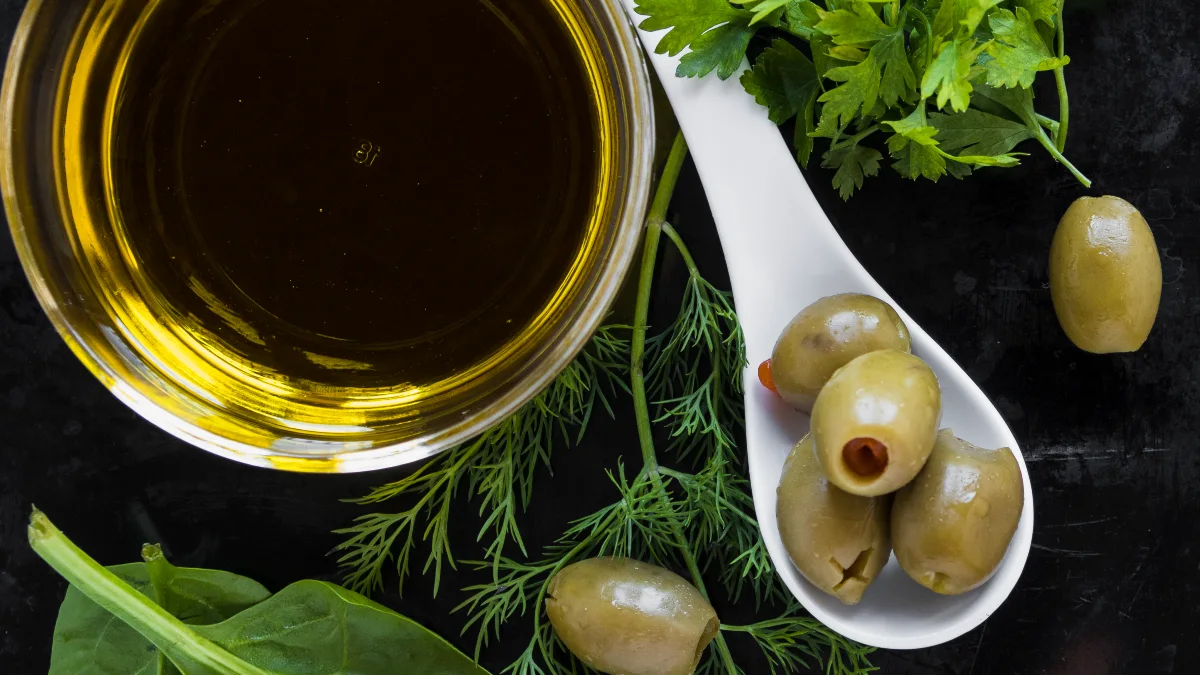
Extra virgin olive oil (EVOO) is often called a true “pill-free” food. It contains a unique and powerful compound named oleocanthal. This specific compound is the source of its main anti-inflammatory benefits.
Oleocanthal acts as a natural non-steroidal anti-inflammatory drug (NSAID). Research confirms it functions in the exact same way as ibuprofen. This mechanism allows it to interrupt inflammatory pathways in the body.
By mimicking ibuprofen, oleocanthal helps calm the body’s inflammation. This action also works to effectively reduce associated pain. It provides a natural way to manage inflammatory responses.
It is important to use extra virgin olive oil exclusively for this benefit. EVOO is the least processed type, ensuring it is rich in nutrients. This minimal processing preserves the maximum amount of oleocanthal.
Rheumatologist Dr. Diana Girnita provides a clear recommendation. She advises using EVOO as a direct substitute for other fats. This switch is a key step in adopting an anti-inflammatory diet.
Specifically, EVOO should replace inflammatory seed oils in your cooking. Common examples to avoid include soybean, corn, and canola oils. Making this simple swap can have a significant impact on inflammation.
3. Berries (Blueberries, Blackberries, Strawberries)

The deep, rich colors of berries, like blueberries and strawberries, come from anthocyanins. These are natural plant chemicals that are known for strong effects. They function as potent antioxidants and anti-inflammatory compounds.
The benefits for joint health are supported by recent science. A 2025 review on anthocyanins for osteoarthritis (OA) showed clear results. It found they “suppressed the activation of inflammatory signalling” in cartilage cells.
Current research is exploring this link even further. A new 2025 study is testing if daily blueberry consumption can reduce pain. This trial focuses on patients who have both osteoarthritis and rheumatoid arthritis.
Medical experts advocate for incorporating these foods into your diet. Dr. Tamiko Katsumoto, a Clinical Associate Professor at Stanford University, gives simple advice. She famously tells her patients to “eat the rainbow.”
Dr. Katsumoto offers a practical way to do this called the “Plate Method.” This method advises filling half of your plate with fruits and vegetables. This ensures you get a variety of beneficial compounds, like anthocyanins.
4. Broccoli (and other Cruciferous Veg)
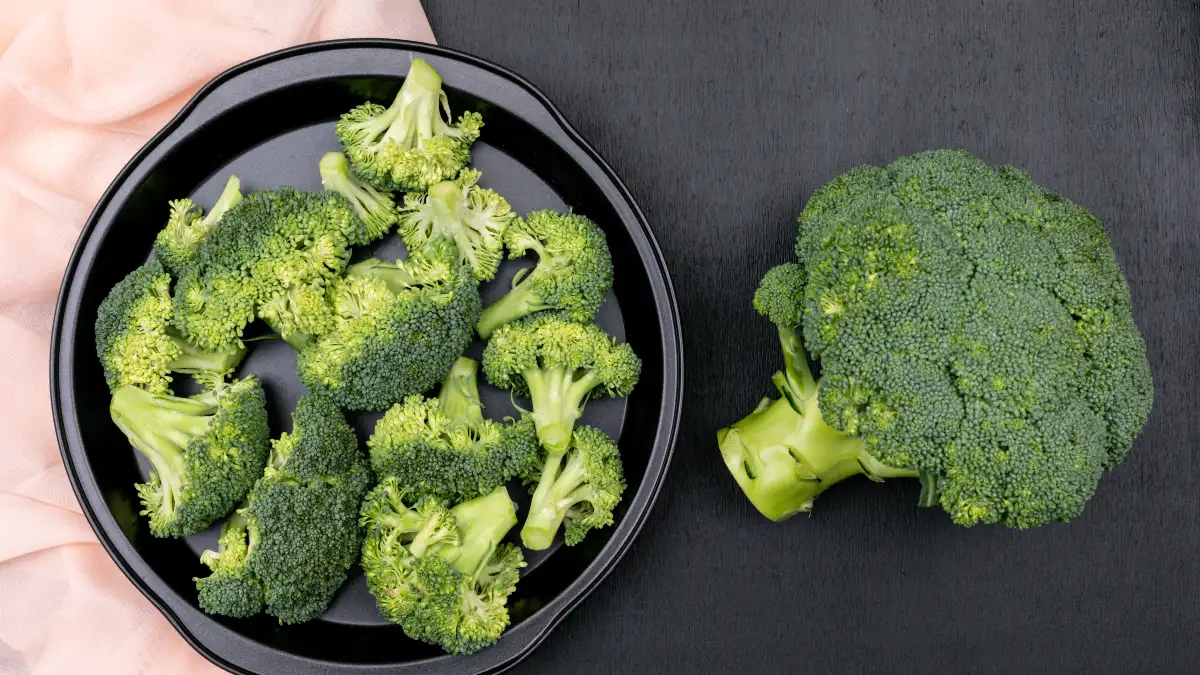
Broccoli contains a superstar compound known as sulforaphane. This powerful nutrient is the source of many of its health benefits. It is being studied for its potent anti-inflammatory effects.
A recent high-quality clinical trial highlights this benefit. The 2024 “BRIO Study” focused on patients with knee osteoarthritis (OA). The results showed exciting new findings regarding pain relief.
In the study, patients consumed a high-sulforaphane broccoli soup for 12 weeks. This group showed a clinically significant decrease in their pain scores. Meanwhile, the group given a placebo soup saw no change in their pain.
You can also find sulforaphane in other related vegetables. These include cruciferous vegetables like kale and Brussels sprouts. This gives you several options for adding it to your diet.
To get the most sulforaphane, a special preparation step is needed. Chop your broccoli, kale, or Brussels sprouts thoroughly. Then, let the chopped vegetable sit for 10 to 40 minutes before cooking.
This crucial waiting period allows an enzyme to activate the compound. This simple step maximizes the amount of active sulforaphane. Cooking it immediately destroys the enzyme and prevents this activation.
5. Turmeric (with Black Pepper)

This well-known yellow spice is turmeric, which contains curcumin. Curcumin is the active compound responsible for its benefits. It is widely recognized as a powerful anti-inflammatory agent.
The scientific evidence supporting curcumin is overwhelming. A 2025 meta-analysis looked at patients with knee osteoarthritis (OA). It found curcumin significantly decreased inflammatory markers in this group.
Further reviews compare curcumin directly to common pain relievers. They conclude its effect on pain is comparable to NSAIDs like ibuprofen. This places it in the same category for effectiveness.
However, curcumin has a major advantage over those drugs. It has been shown to have a much better safety profile. This makes it a safer option for long-term use.
Some studies showing significant pain reduction use specific dosages. These trials often use 1,500 to 2,000 mg per day. This suggests a therapeutic dose is needed for strong effects.
To get the benefit, always have curcumin with piperine (from black pepper). This applies whether you get it from food or a supplement. Piperine has been shown to boost curcumin’s absorption by up to 2,000%.
6. Ginger

This potent root is ginger, and its main active compound is gingerol. When you apply heat to ginger, the gingerol converts into another compound. This new compound, called shogaol, is an even more potent anti-inflammatory.
The process of heating is what creates this enhanced benefit. Cooking fresh ginger transforms the gingerols into the more powerful shogaols. This makes cooked ginger a stronger anti-inflammatory than raw ginger.
Strong scientific evidence supports ginger’s use for joint pain. A 2025 analysis looking at 39 different trials found clear benefits. It named ginger as a supplement that clearly helps knee osteoarthritis symptoms.
The benefits are not just limited to osteoarthritis. Clinical trials have shown ginger is effective for many conditions. It is proven to help a wide range of different inflammatory issues.
To get the most powerful anti-inflammatory kick, you should cook your ginger. This is the best way to maximize its pain-relieving properties. It is an easy and flavorful addition to many different dishes.
Add fresh ginger generously to your soups, curries, and stir-fries. The heating process during cooking is what activates its full potential. This converts the gingerol to the more potent shogaols, maximizing the benefit.
7. Nuts & Seeds (Walnuts, Flax, Chia)
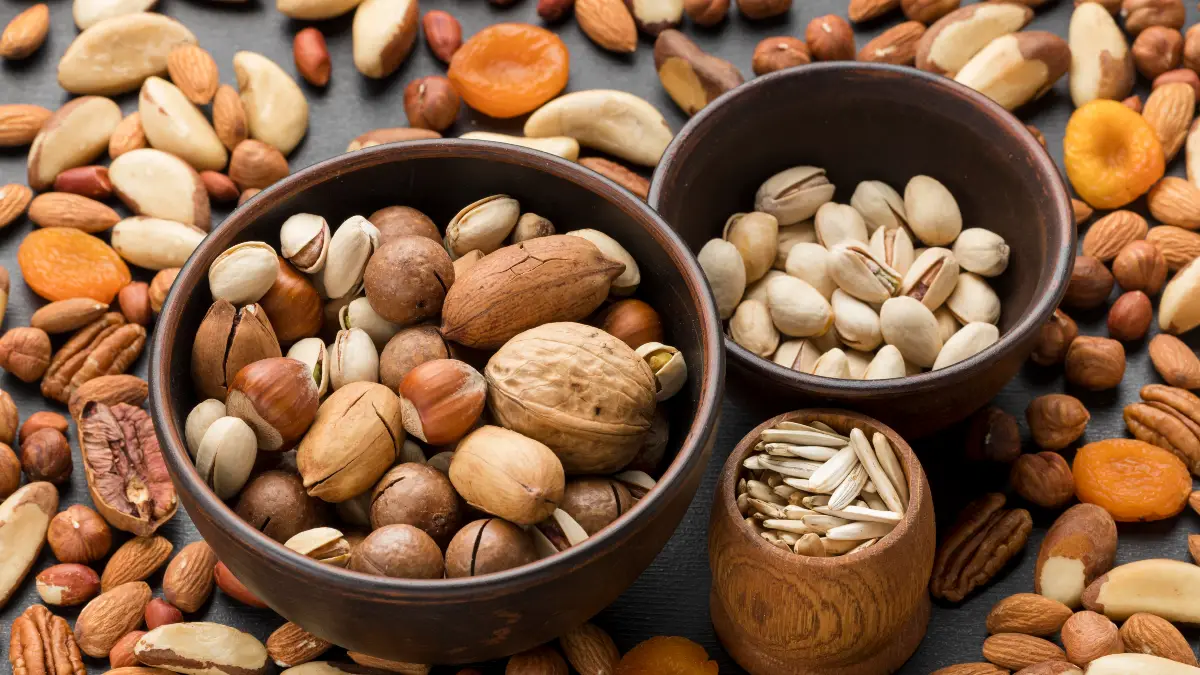
Nuts and seeds are plant-based omega-3 powerhouses. They provide healthy fats, essential fiber, and anti-inflammatory minerals. This combination makes them a valuable addition to any diet.
These foods are a key component of the Mediterranean diet. This eating pattern is widely recommended by experts. Nuts and seeds are fundamental to its anti-inflammatory benefits.
Dr. Tamiko Katsumoto specifically highlights one of these foods. She calls chia seeds “a ‘perfect food'” for their nutritional profile. This title is due to their dense concentration of key nutrients.
Chia seeds earn this praise because they are high in fiber. They are also an excellent source of both protein and omega-3s. This makes them incredibly well-rounded and beneficial.
Another expert, HSS dietitian Laura Gibofsky, agrees on their importance. She lists “walnuts, chia seeds and flax seeds” as top choices. These are essential plant-based sources of healthy fats.
Gibofsky recommends actively adding these specific foods to your diet. This is a simple way to boost your intake of plant-based omega-3s. They can be easily incorporated into meals and snacks.
8. Garlic & Onions
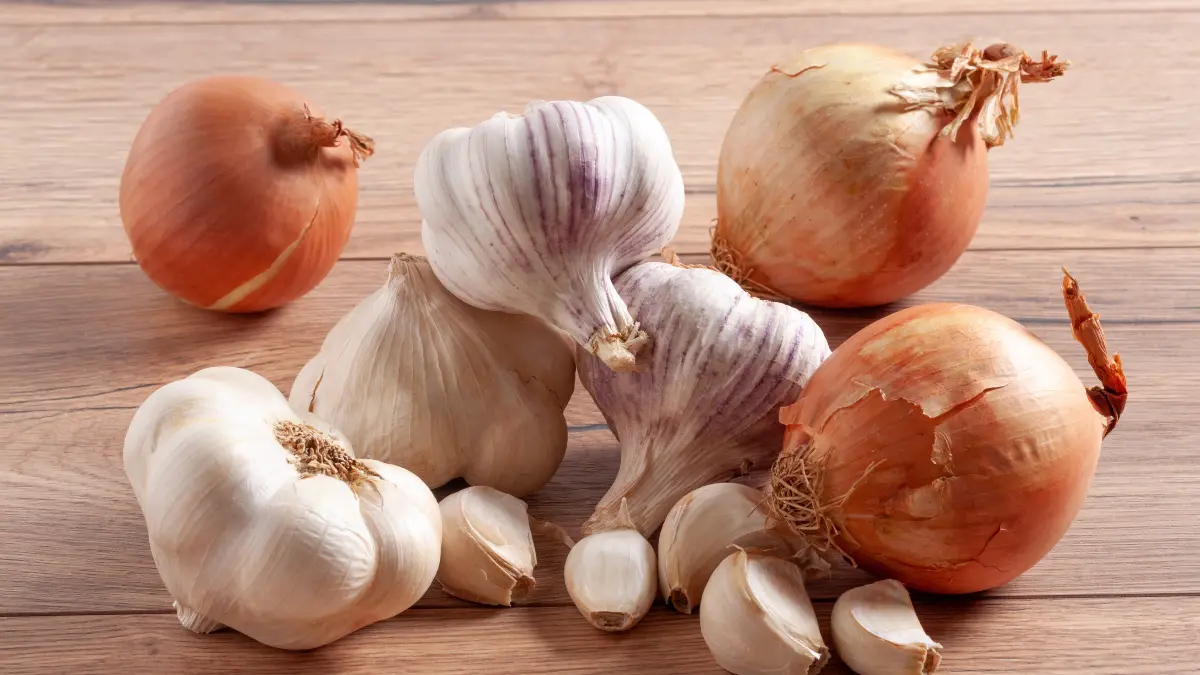
These vegetables, like garlic and onions, are rich in anti-inflammatory sulfur compounds. They also function as prebiotics, which is crucial for gut health. Prebiotics act as food for the good bacteria living in your gut.
This gut-feeding role is critical for the “gut-joint axis.” This term describes the important link between your gut health and joint inflammation. A healthy gut environment can lead to reduced inflammation in the joints.
Scientific studies confirm the benefits of these foods. Research shows that garlic’s compounds are effective in reducing inflammation. This provides strong evidence for their use in an anti-inflammatory diet.
The National Rheumatoid Arthritis Society (NRAS) makes specific recommendations. They advise using garlic and onions to improve overall gut health. This is promoted as a natural way to help manage joint inflammation.
Incorporating these foods into your meals is simple and effective. They are a low-cost, high-impact way to add anti-inflammatory power. They also add a significant boost of flavor to almost any savory dish.
9. Beans & Legumes (Lentils, Chickpeas)
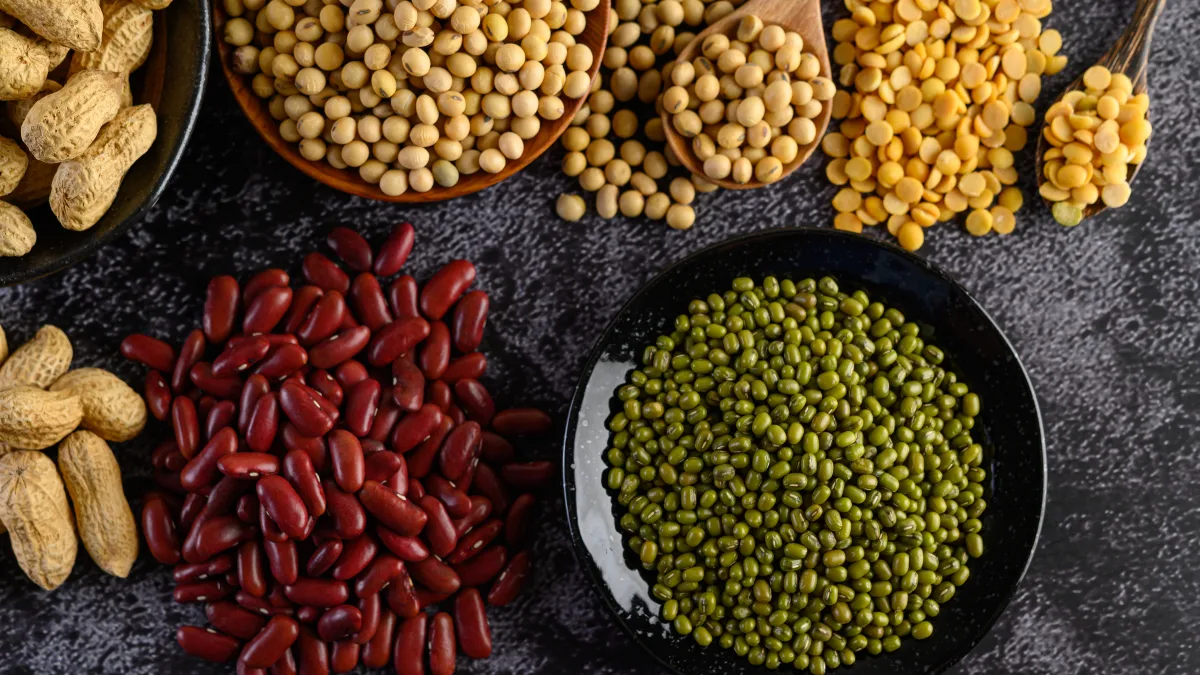
Legumes, such as beans and lentils, are a nutritional “triple-threat.” They are packed with essential fiber for digestive health. They also provide high-quality plant-based protein and antioxidants.
Scientific research supports their anti-inflammatory role. One study of 10 common bean varieties found they are full of beneficial compounds. They contain “a host of antioxidant and anti-inflammatory compounds.”
Certain beans are ranked as antioxidant superstars by the USDA. Small red beans, red kidney beans, and pinto beans are key examples. These three are listed in the top 4 antioxidant-rich foods.
This makes legumes a key protein swap for an anti-inflammatory diet. Dr. Girnita and Dr. Katsumoto both recommend them as a primary substitute. They should replace inflammatory processed meats like sausage or bacon.
Dr. Katsumoto highlights the habits of people in “Blue Zones.” These are longevity hotspots where people live exceptionally long lives. A common habit in these zones is eating “half to one cup of beans a day.”
10. Whole Grains (Oats, Quinoa, Brown Rice)
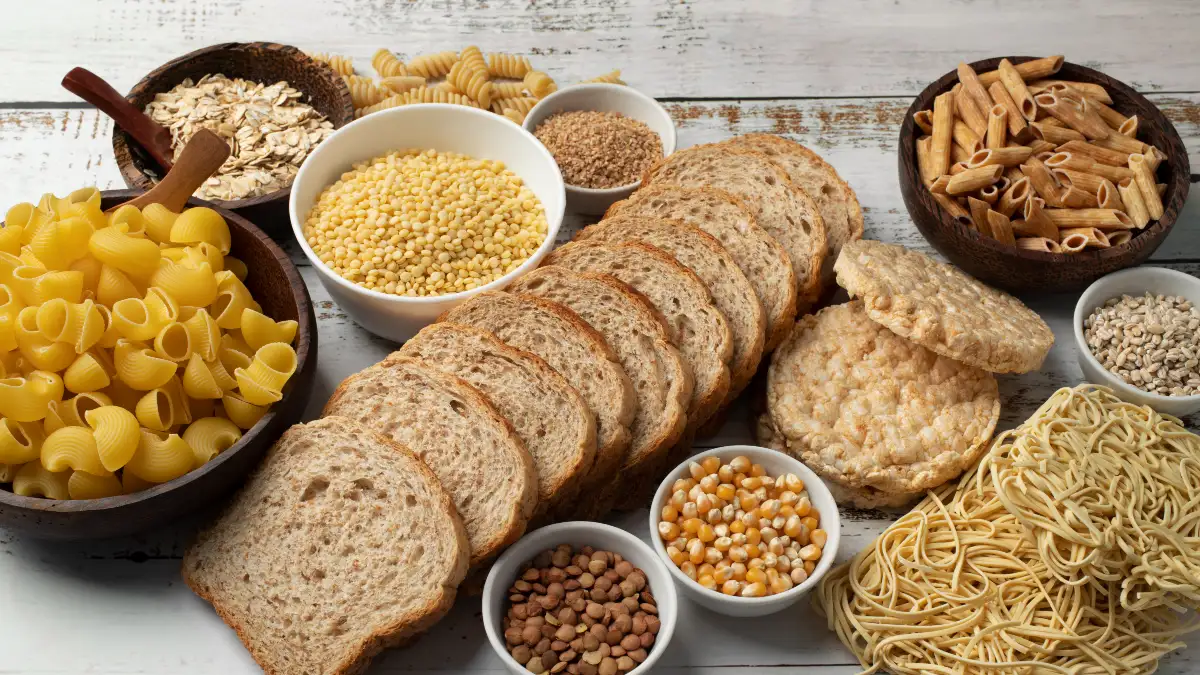
Refined grains, like white bread and white rice, are known to cause inflammation. In contrast, whole grains have the opposite effect on the body. They are a key part of an anti-inflammatory eating plan.
Whole grains are packed with beneficial nutrients. They are excellent sources of fiber and anti-inflammatory minerals. One of these key minerals is magnesium.
Because of these benefits, they are a core component of anti-inflammatory diets. Virtually every expert-recommended plan includes whole grains. They are considered a foundational food for reducing inflammation.
Dr. Girnita, a rheumatologist, offers direct and simple swaps. She advises replacing white bread with whole-grain sourdough. She also says to swap white rice for quinoa or wild rice.
Dietitian Laura Gibofsky focuses on the high fiber content. Her daily goal for patients is to consume 25-30 grams of fiber. This target is crucial for reaping the health benefits.
This goal highlights a major dietary gap for many people. The average American eats only 8-10 grams of fiber per day. Switching to whole grains helps close this significant fiber deficit.
11. Leafy Greens (Spinach, Kale, Swiss Chard)
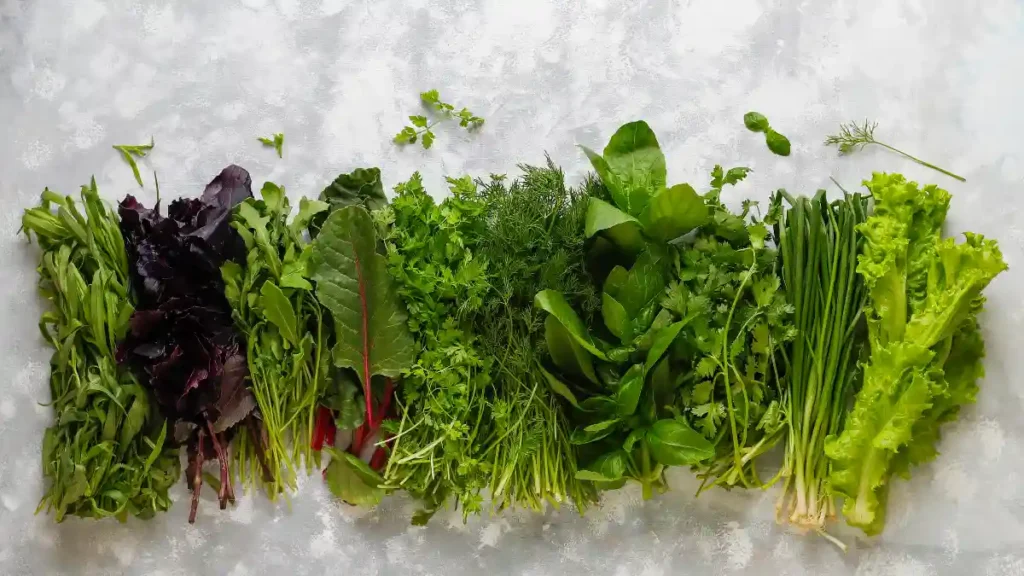
These leafy greens are nutritional powerhouses. They are loaded with a wide array of antioxidants and plant chemicals. Key examples include vitamins C, E, and K.
These vitamins serve a critical protective function in the body. They work to protect your cells from damage caused by free radicals. This action directly helps to reduce overall inflammation.
Their benefit is widely recognized by medical experts. They are recommended by virtually every major health institution. This consensus highlights their importance for good health.
Leafy greens are considered foundational anti-inflammatory foods. They form the very basis of an eating plan designed to fight inflammation. Their inclusion is seen as non-negotiable for success.
This concept is the foundation of Dr. Katsumoto’s “Plate Method.” It is a simple, visual guide for building a healthy meal. She advises patients to use these vegetables as the starting point.
Her specific advice is to “Fill half your plate” with vegetables. This half should be primarily composed of leafy greens like these. This ensures a high intake of anti-inflammatory nutrients at every meal.
12. Fermented Foods (Yogurt, Kefir, Sauerkraut)
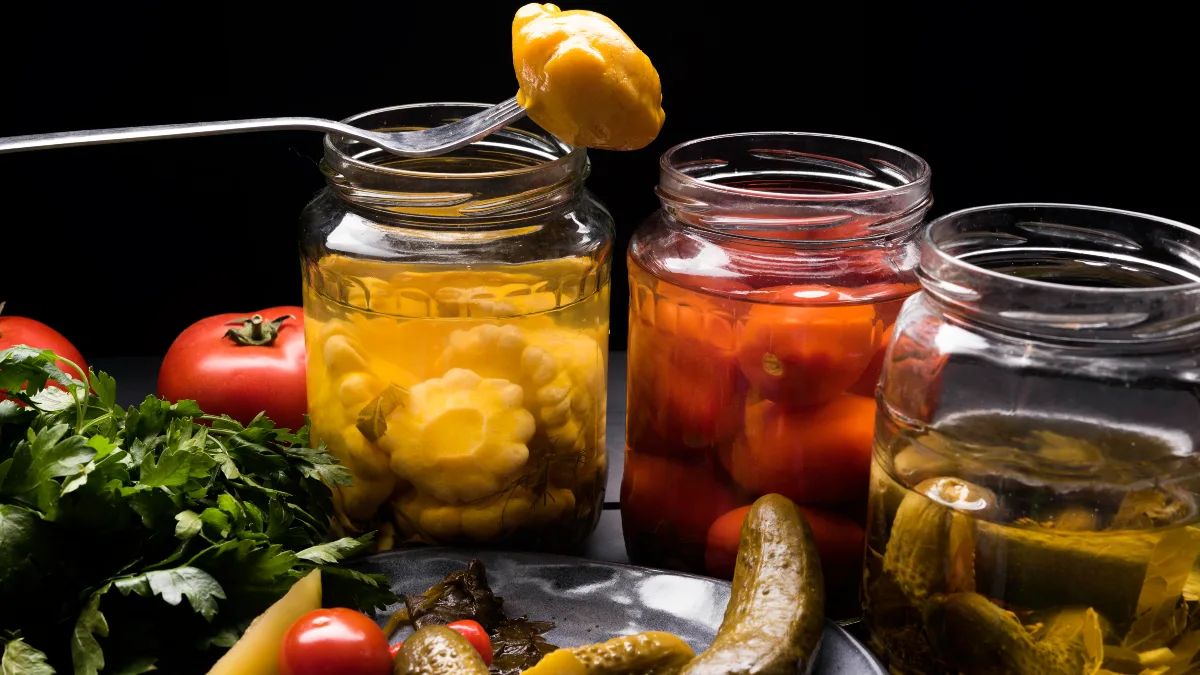
Fermented foods offer a direct fix for the “gut-joint axis.” They are rich in probiotics, which are beneficial bacteria. These bacteria help heal the gut lining and restore balance.
A healthy gut lining is crucial for overall health. It plays a key role in lowering body-wide inflammation. This directly links the state of your gut to your joint health.
Recent research highlights how critical this connection is. A 2025 rheumatology conference presented new findings. It showed gut health may predict a patient’s inflammation levels.
The research also suggested gut health could predict treatment success. This means a patient’s gut microbiome might influence their response to RA treatment. This makes the gut a new focus for managing arthritis.
Dr. Girnita, a rheumatologist, recommends specific fermented foods. She calls kefir, a fermented dairy drink, “a top choice… for osteoarthritis.” She notes its probiotics are proven to reduce joint inflammation.
Dr. Katsumoto also advises eating these types of foods. Her specific recommendations include sauerkraut and kimchi. These provide potent probiotics from fermented vegetables.
13. Collagen / Bone Broth
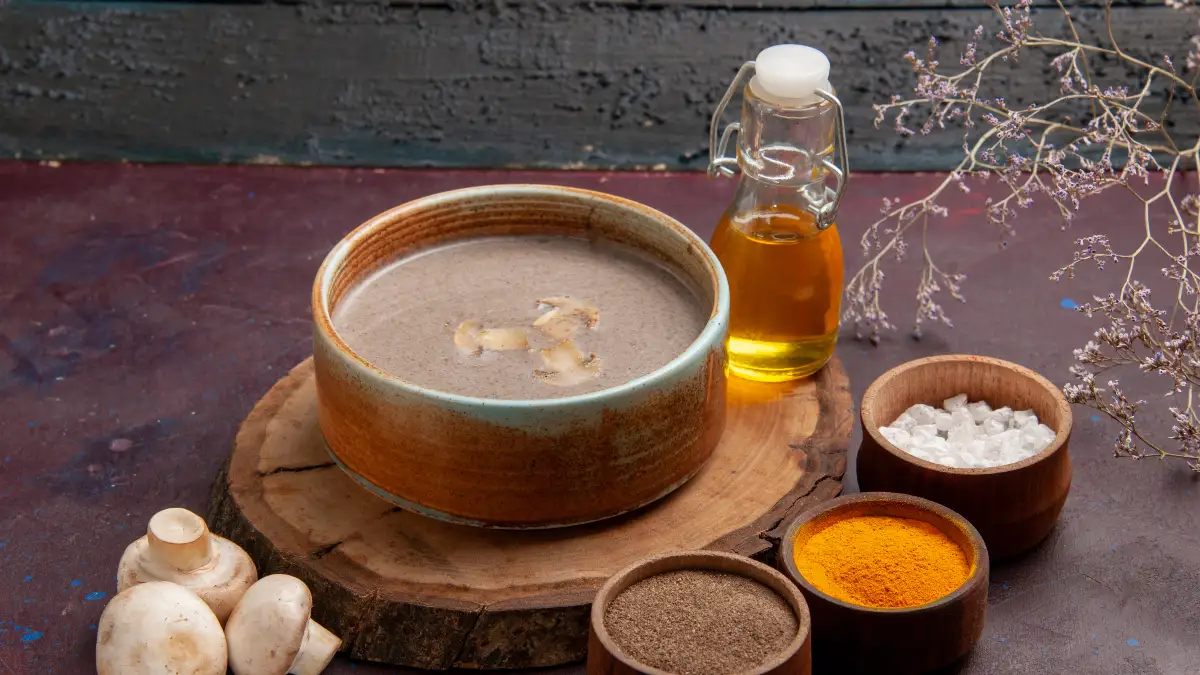
This food provides a structural benefit, not just an anti-inflammatory one. Hydrolyzed collagen supplies the amino acid “building blocks” (peptides). These are the raw materials your body needs for tissue repair.
These peptides are special because they may reach joint tissues directly. Once there, they are thought to exert “chondroprotective effects.” This means they may actively help to protect your existing cartilage.
The science supporting this is growing and is a major area of study. A 2023 review confirmed that collagen is heavily researched for joint health. This review looked at both native and hydrolyzed forms of collagen.
More specific evidence comes from a 2025 analysis of 39 trials. This large-scale review found that collagen showed clear benefits. It was shown to improve symptoms for patients with knee osteoarthritis.
Bone broth is a whole-food source related to collagen. The National Rheumatoid Arthritis Society (NRAS) recommends it. They specifically note its benefits for improving gut health.
You can easily incorporate bone broth into your diet. It can be consumed on its own as a warm, savory drink. It also works perfectly as a nutritious base for soups and stews.
Conclusion
Ending chronic pain without pills is not about one “miracle” food. As doctors and new research confirm, it is about changing your dietary pattern to fight inflammation where it starts.
By using these 13 joint-healing foods and swapping out the inflammatory ones, you are no longer just a victim of your pain. You are taking active, expert-approved control of your joint health.
Start small. Pick one swap from the table above to try this week. Which food will you add to your plate first? Your path to relief can begin with your next meal.


